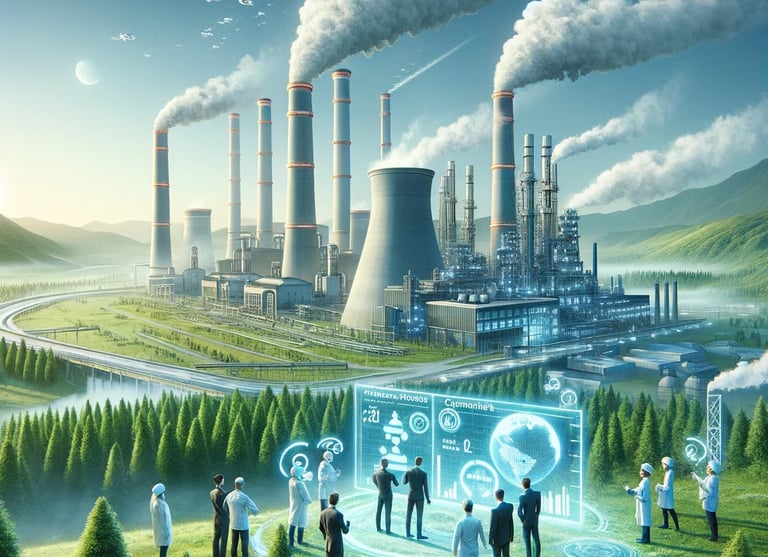The Pivotal Role of Carbon Capture in Mitigating Climate Change
Role of Carbon Capture in Mitigating Climate Change
zivaiclimate
3/7/20243 min read


image credit DALL.E
In recent years, the conversation around climate change has intensified, with an increasing focus on innovative solutions to reduce atmospheric CO2 levels. One of the most discussed and potentially transformative technologies in this context is carbon capture and storage (CCS), a method that offers a way to mitigate global warming by capturing carbon dioxide emissions from sources like power plants and industrial processes, and then storing it underground or using it in various applications. This blog explores the significance, methods, and challenges of carbon capture, drawing on insights from leading research and initiatives in the field.
What is Carbon Capture?
Carbon capture encompasses a variety of technologies designed to capture, transport, and securely store CO2 emissions from large point sources or even directly from the atmosphere. The aim is to prevent the CO2 generated by human activities from entering the atmosphere and contributing to the greenhouse effect and global warming.
Methods of Carbon Capture
1. Post-Combustion Capture: This method captures CO2 from the flue gases of power plants or industrial sites after combustion, using solvents or solid sorbents.
2. Pre-Combustion Capture: In this approach, fossil fuels are converted into a mixture of hydrogen and CO2 before combustion. The CO2 is then separated and captured.
3. Direct Air Capture (DAC): A more recent innovation, DAC technologies extract CO2 directly from the atmosphere. This approach has the potential to reduce the existing levels of atmospheric CO2, going beyond merely preventing new emissions.
Applications of Captured Carbon
Once captured, CO2 can be used in various ways:
Storage: Injected deep underground into geological formations, where it is securely stored and cannot escape back into the atmosphere.
Utilization: Used in the production of materials like concrete, plastics, or even synthetic fuels, providing a way to recycle carbon emissions beneficially.
The Importance of Carbon Capture
The significance of carbon capture technology in the fight against climate change cannot be overstated. It addresses the emissions from the hardest-to-abate sectors, such as heavy industry and power generation, and offers a pathway to achieve net-zero emissions by the second half of the century, a goal outlined in the Paris Agreement. Moreover, direct air capture provides a solution for removing legacy CO2 from the atmosphere, a critical step towards reversing climate change.
Challenges and Opportunities
While the potential of carbon capture is immense, the technology faces several challenges. High costs, energy requirements, and the need for significant infrastructure development are among the hurdles that need to be overcome. However, ongoing research, policy support, and technological advancements are making carbon capture more feasible and cost-effective.
Policy and Market Incentives
Governments and international bodies are increasingly recognizing the role of carbon capture in achieving climate targets. Policies and incentives, such as carbon pricing, subsidies for CCS projects, and support for research and development, are crucial for accelerating the deployment of these technologies.
Technological Innovation
Innovation is key to reducing the costs and improving the efficiency of carbon capture technologies. Advances in materials science, engineering, and chemistry are opening new possibilities for more effective and economical carbon capture methods.
Looking Ahead
The path to a sustainable, low-carbon future is multifaceted, requiring a mix of renewable energy, energy efficiency, and groundbreaking technologies like carbon capture. As we continue to advance our understanding and capabilities in this field, carbon capture stands as a critical tool in our arsenal against climate change, offering hope for a cleaner, greener planet.
In conclusion, carbon capture is more than just a technological challenge; it's an essential part of the global response to climate change. By continuing to invest in research, development, and policy frameworks that support CCS and DAC, we can pave the way for a future where carbon emissions are not just reduced but actively managed for the health of our planet.
